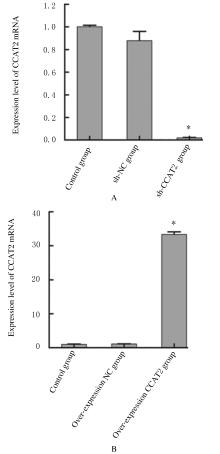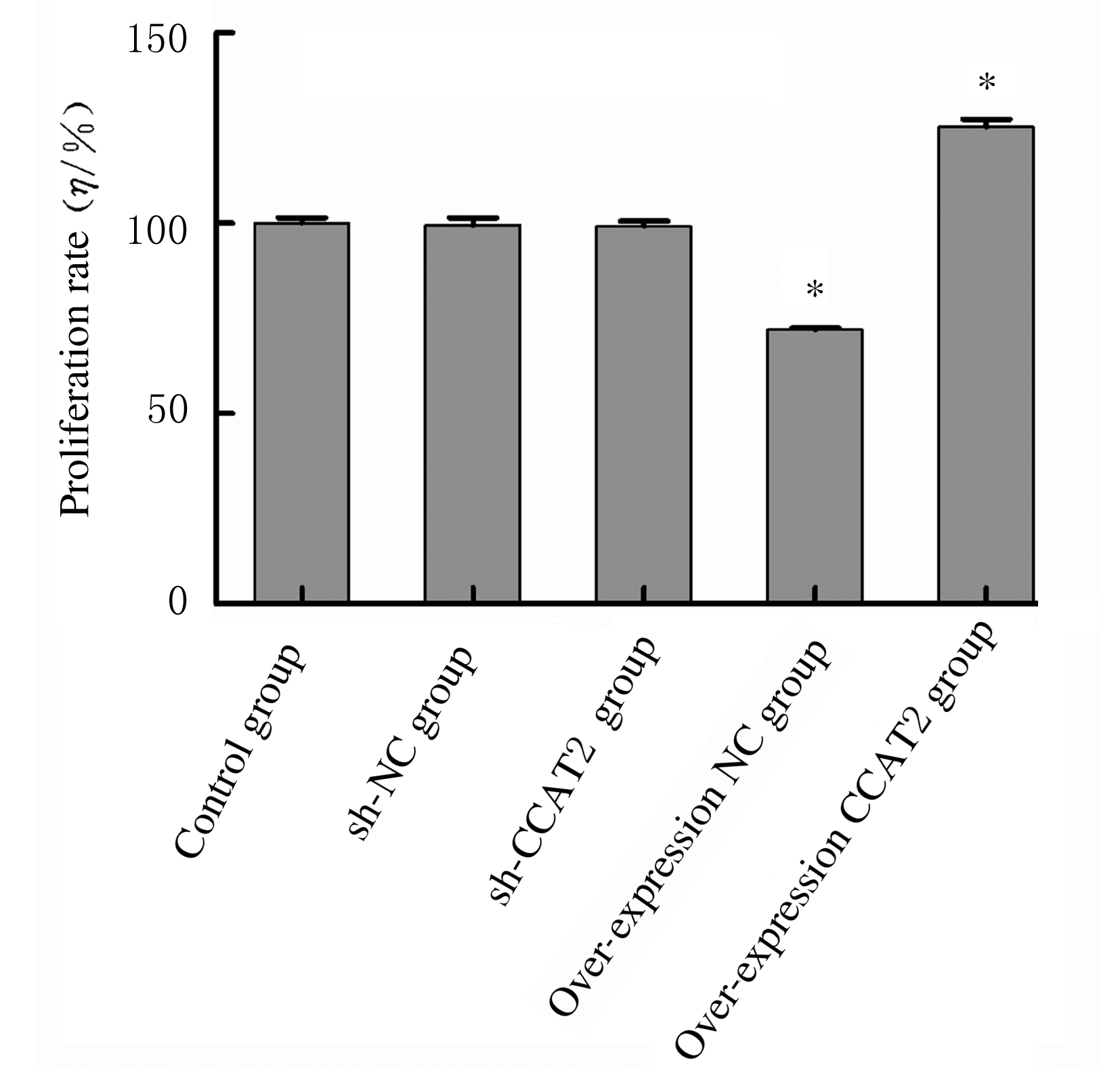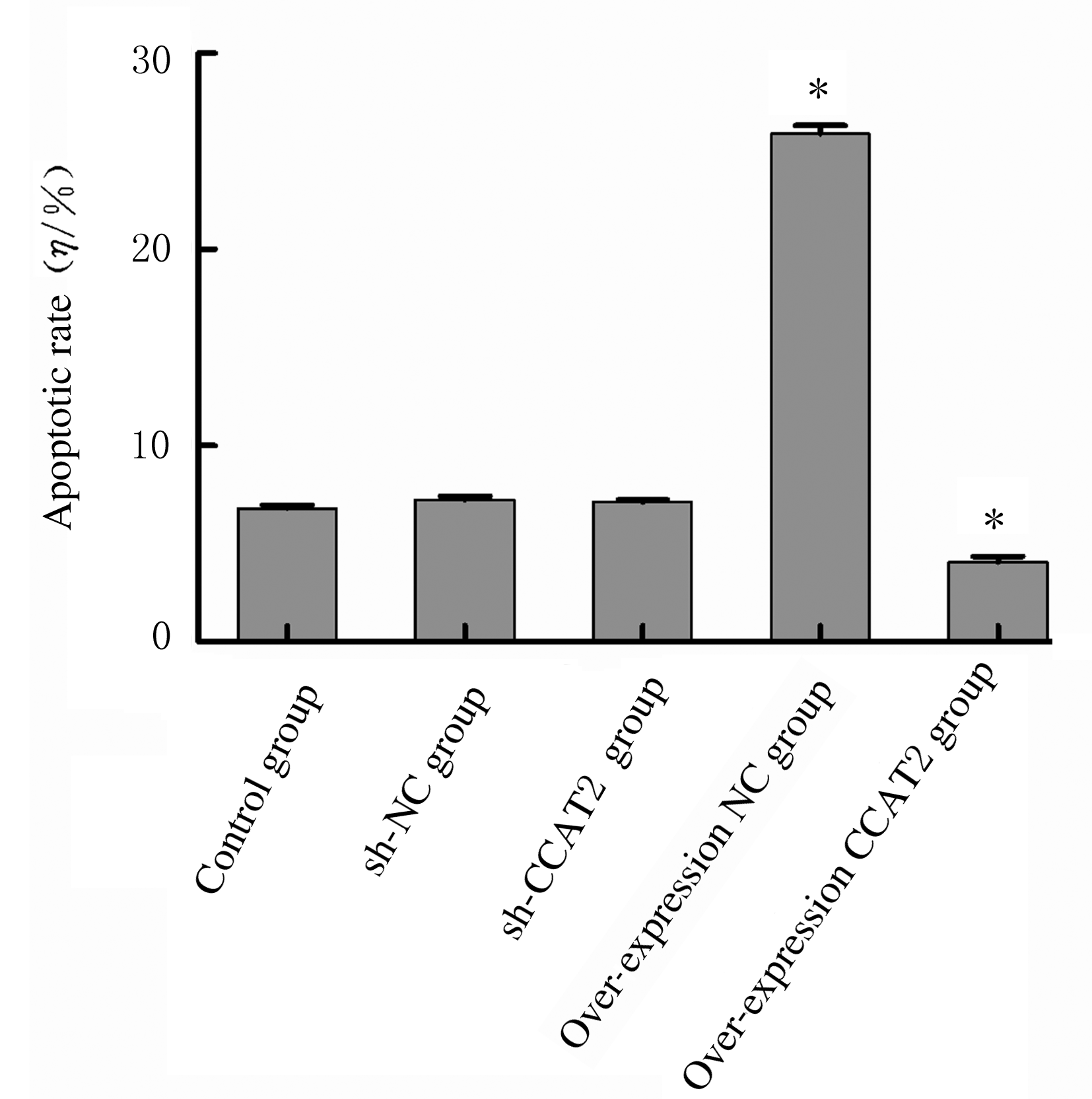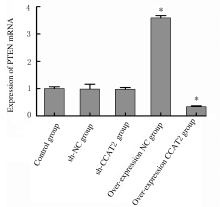| [1] |
Guanhu LI,Qingxu LANG,Chunyan LIU,Qin LIU,Mengrou GENG,Xiaoqian LI,Zhenqi WANG.
Inhibitory effect of valproic acid combined with X-ray irradiation on proliferation of breast cancer MDA-MB-231 cells and its mechanism
[J]. Journal of Jilin University(Medicine Edition), 2022, 48(3): 622-629.
|
| [2] |
Bingxue QI,Yangwei WANG,Yixian ZHANG,Jingbo ZHAO,Yan MA,Yadong SUN.
Ameliorative effect of liraglutide on renal function and podocyte injury of rats with diabetic nephropathy and its mechanism
[J]. Journal of Jilin University(Medicine Edition), 2022, 48(2): 331-339.
|
| [3] |
Xingyu ZHAO,Xin YANG,Zhihua ZHU,Han HE,Zitong SONG,Wei ZHANG.
Inhibitory effect of juglone on proliferation of cervical cancer cells and its mechanism
[J]. Journal of Jilin University(Medicine Edition), 2022, 48(2): 348-355.
|
| [4] |
Chunxu LIU,Hongxia SUN,Bo HU,Enping JIANG.
Inhibitory effects of Schisandrin B on cardiac fibroblast proliferation and its PI3K/Akt/P27kip1 signaling pathway mechanism
[J]. Journal of Jilin University(Medicine Edition), 2022, 48(1): 52-58.
|
| [5] |
Xiaolei XU,Yukun YANG,Zhongming LI,Xinyue LI,Ying WANG,Jie SHENG,Jing ZHANG,Xiuling SUN,Hongyan WANG,Li QU,Huan LI.
Improvement effect of ginsenoside Rg3 on reproductive function injury induced by dibutyl phthalate in mice and its mechanism
[J]. Journal of Jilin University(Medicine Edition), 2021, 47(6): 1429-1436.
|
| [6] |
Jingjing MA,Yu LIU,Yan LIANG,Ying LI.
Promotion effect of total alkaloids of leonurus on decidual villus excretion in drug abortion rats and its mechanism
[J]. Journal of Jilin University(Medicine Edition), 2021, 47(6): 1476-1484.
|
| [7] |
Chen WANG,Jun TIAN,Hailing CHENG.
Effect of human umbilical cord mesenchymal stem cells on proliferation and apoptosis of cervical cancer HeLa cells and its mechanism
[J]. Journal of Jilin University(Medicine Edition), 2021, 47(5): 1187-1193.
|
| [8] |
Yingying SHI,Shitong CHEN,Bo HU,Duo SHEN,Kuang ZHU,Siwei YE,Jinmei FENG.
Induction of 3C protein of Coxsackievirus A16 in apoptosis of human rhabdomyosarcoma cells and its mechanism
[J]. Journal of Jilin University(Medicine Edition), 2021, 47(4): 874-881.
|
| [9] |
Jie YANG,Wubin HE,Ni AN,Wencong KONG,Rongjian SU,Xuezhe WANG.
Regulatory effect of glucose-regulating protein 78 on radiotherapy sensitivity of liver cancer cells and its mechanism
[J]. Journal of Jilin University(Medicine Edition), 2021, 47(4): 888-895.
|
| [10] |
Cuilan LIU, Jianjun LI, He JIANG, Jing LIU, Dan WANG, Chen LI, Di ZHAO.
Effect of urolithin B on biological behaviors of human glioblastome U118 MG cells and its mechanism
[J]. Journal of Jilin University(Medicine Edition), 2021, 47(3): 566-574.
|
| [11] |
Bingxue QI,Yan MA,Yixian ZHANG,Yadong SUN,Lining MIAO.
Effect of liraglutide on expressions of mRNA and protein of related proteins after podocyte injury induced by high glucose and its mechanism
[J]. Journal of Jilin University(Medicine Edition), 2021, 47(2): 275-283.
|
| [12] |
Nuan WANG,Lijuan YANG,Juanjuan DAI,Aili WANG,Yan WU,Chengxia LIU.
Promotion effects of MARCH1 on migration and invasion of human gastric cancer cells through PI3K/AKT signaling pathway
[J]. Journal of Jilin University(Medicine Edition), 2021, 47(2): 352-359.
|
| [13] |
.
Inhibitory effect of curcumin on tumor growth in colorectal cancer mice and its mechanism of PTEN/PI3K/Akt signaling pathwayPEI Yongbin, WANG Guiqi, LI Wei, JIANG Xia, JIANG Haibo, ZHAO Zengren (Department of General Surgery,First Hospital,Hebei Medical University, Shijiazhuang 050031,China)
[J]. Journal of Jilin University(Medicine Edition), 2021, 47(1): 145-151.
|
| [14] |
Meijuan LU,Xiande MA,Lu REN.
Effect of acupuncture combined with medicine-induced autophagy on cognitive function of mice with ApoE gene knockout
[J]. Journal of Jilin University(Medicine Edition), 2020, 46(6): 1124-1130.
|
| [15] |
Ye LIU,Longyun CHEN.
Effect of astragalus polysaccharide on cisplatin resistance of human lung cancer A549/DDP cells and its mechanism
[J]. Journal of Jilin University(Medicine Edition), 2020, 46(6): 1162-1168.
|
 )
)















